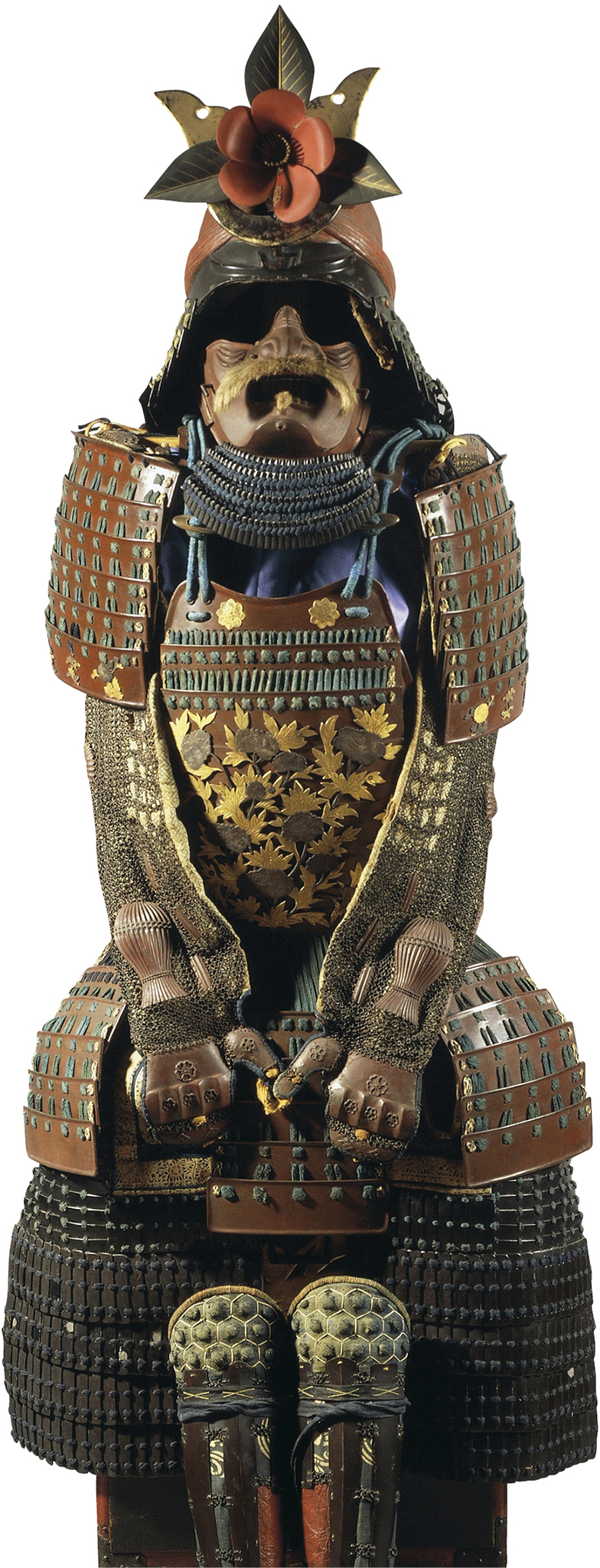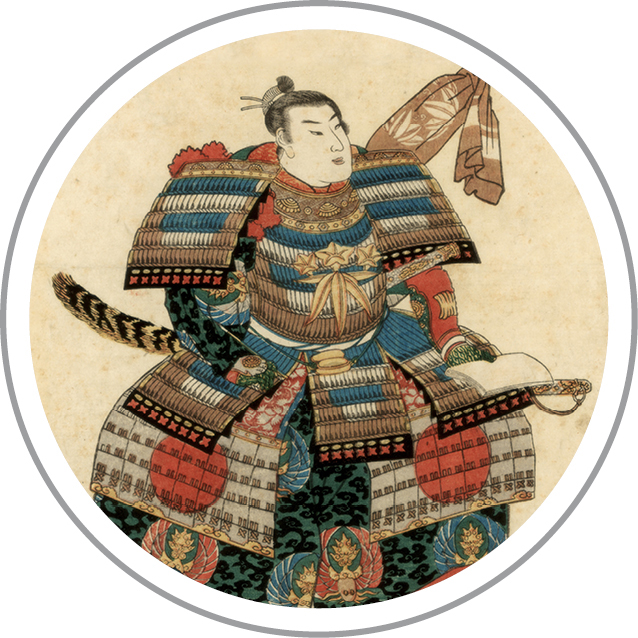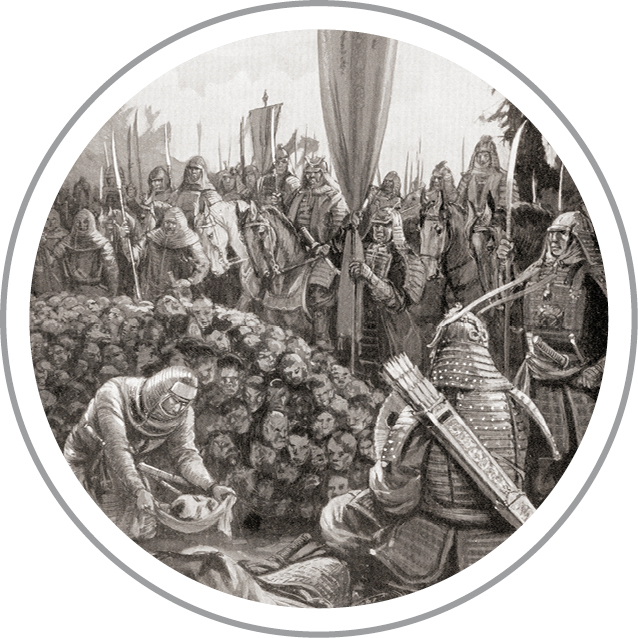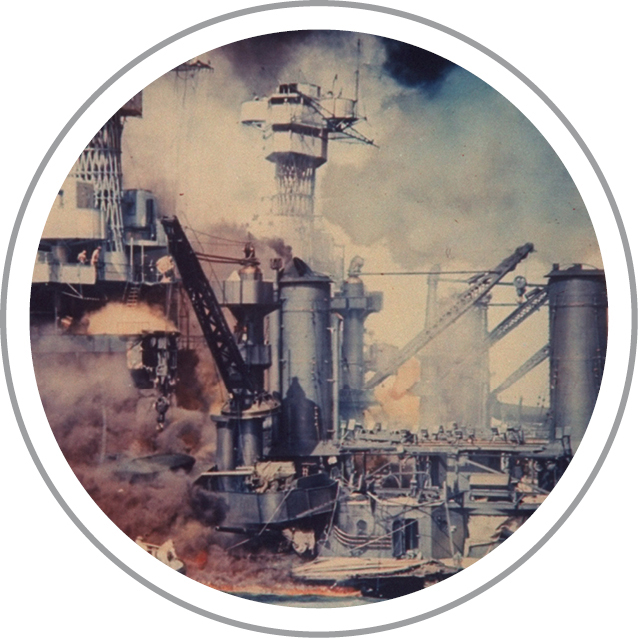歴史
history
The story of Japan
Japanese history has been marked by periods of isolation, allowing Japan to develop a unique and insular culture that captivated the world once it opened up to the global community in the 19th century.

D Lady Murakami’s The Tale of Genji is considered the world’s first novel.
the Heian era
The first records of Japan appear in the 3rd-century annals of the Chinese courts. They recount the existence of people living on the islands off the coast of Korea, ruled over by a queen named Himiko. As contact between China, Korea, and Japan deepened, a new Japanese elite emerged, deeply steeped in the culture of the Chinese aristocracy. Named after its capital (present-day Kyoto) the Heian Era (794–1185) was a turning point in Japanese civilization, as the aristocrats of the court fused indigenous elements and themes, such as native mythology and the celebration of nature, to traditional Chinese pursuits of courtly painting, calligraphy, and poetry.
Meanwhile, cultured Heian women pioneered the first Japanese syllabary, hiragana, which they used to compose epoch-defining works of literature such as The Tale of Genji and the Pillowbook, works of exquisite sensitivity that immortalized the elegant world of the Heian Court.
The Samurai Rule
In 1185, the refined world of the court was shattered by the struggle of the Taira and Minamoto clans—marking the point at which a feudal warrior culture, the samurai, supplanted that of Kyoto’s aristocracy. This civil war led to the establishment of Japan’s first Shogunate administration, and the transferral of true power from Kyoto to Kamakura. The Shoguns were hereditary warrior-rulers, exercising power over the country on behalf of the emperors in whose name they ruled. It was at this time that Zen Buddhism, another Chinese import, became popular with the warrior elite for whom its precepts—acting with intuition, confronting death without fear—were concepts to be cultivated.
In 1467, a new civil war ended the authority of the shoguns, and a century of turmoil followed. Eventually, a trio of leaders—Oda Nobunaga, Toyotomi Hideyoshi, and Tokugawa Ieyasu— reestablished the authority of the central government. The seat of power was moved to the site of a small fishing settlement named Edo, present-day Tokyo.
Edo Japan

D The helmets of samurai armour were adorned with crests, such as a camellia.
The new Tokugawa Shogunate sought to promote stability by restricting foreign shipping to the area of Nagasaki. The Portuguese, who had previously been welcome in the country, were expelled following Jesuit attempts to convert the Japanese to Catholicism. Only the Dutch, who aided in the suppression of Japan’s Christian community, were allowed to continue trading.
For the following two hundred years, Japan was largely cut off from the west. With peace restored, the country boomed, and by 1700 Edo was the largest city in the world—with more than 1,000,000 inhabitants. In the newly rich cities, the wealthy merchants created their own distinct culture characterized by bawdy literature, riotous theater, and pleasure quarters known as the “floating world.” This period of isolation is responsible for the creation of the distinctly Japanese culture, which remains one of the country’s enduring fascinations to this day.
The Meiji Era
In 1853, Commodore Perry of the US Navy steamed into Edo Bay to challenge Japan’s refusal to enter into international relations. Weakened by unrest from within, the Shogunate had no choice but to accede to these demands. During a period of civil war that followed, reformers made use of Western military tactics and technology to force damaging concessions from the Shogunate, resulting in its total collapse.
In 1868, imperial power was restored, and Emperor Meiji relocated to the new capital of Tokyo. The Meiji regime quickly embraced the technological achievements of the West and set out to modernize the country. Seemingly overnight, all the trademarks of Western civilization exploded into life across Japan, from rail- roads and banks to cigarettes and top hats.
early 20th century
After a hugely transforming reign, the Meiji Emperor died in 1912. The Taisho era that followed saw party politics flourish, while suffrage was extended and new labor laws enacted. A vibrant new culture blossomed as young Japanese men and women reveled in their new economic, social, and political freedoms.
Japan seemed to be set on a course for liberalization. But then, in 1923, the devastating Great Kanto Earthquake struck. More than 100,000 people died, and much of Tokyo was destroyed. To many conservatives, this catastrophe was heaven’s judgment on the excesses of the Taisho era. A rumor soon spread that Korean residents of Tokyo were taking advantage of the disaster, looting and committing arson. As mob violence against the Korean population broke out, conservatives used the chaos to reassert control. Soon the military was in complete control over Japanese society and acting increasingly assertive abroad.

D A moment of silence is observed across Japan at 11:58:44 on Sept. 1, in memory of those who lost their lives in the Great Kanto Earthquake.
By the mid-1930s the country was embroiled in a war with China that estranged it from the rest of the world. Then, in December 1941, Japan made the fateful decision to launch surprise attacks against both the US and the British Empire, entering World War II. In August 1945, with millions dead across Asia and most of Japan’s cities already in ruins, the US dropped atomic bombs on Hiroshima and Nagasaki. Emperor Hirohito instructed his government to sue for peace.
The Postwar Years
Following the Japanese surrender, the Americans occupied Japan for seven years that proved transformative to Japan. The Americans brought democracy and the expectation of a level of personal freedom that would have been unthinkable even in the freewheeling Taisho Era.
In 1952 the American occupation ended, and Japan was finally free from military control for the first time in decades. A creative shockwave was unleashed, ushering in a period of intense innovation in art, film, literature, and architecture. As the US became involved in first the Korean, and then Vietnamese wars, Japanese industrial production surged to meet demand, and soon automotive and technological exports made Japan one of the richest nations in the world. The country continued to boom until the economic bubble burst in 1992, followed by over two decades of stagnation.
21st-Century Japan
Despite the legacy of Japan’s postbubble economic malaise, the nation remains an industrial and cultural behemoth on the world stage. The Japanese have shown great resilience in overcoming various setbacks. They have persevered and rebuilt in the aftermath of the Great Tohoku Earthquake and Fukushima nuclear disasters of 2011, and continue to be visionaries in the fields of transportation, space exploration, technology, design, and media.
As a new emperor takes the throne, the whole nation is determined to use the opportunity of the 2020 Olympic Games to step forward into the world spotlight once again.
Be More Japan history

D Across the world, excitement builds for the opening of the Summer Olympics on July 24, 2020.
Be More Japan history
KEY MOMENTS IN JAPANESE HISTORY |
||||
239 |
Himiko, queen of Yamato (early Japan), sends envoys to China. |
|||
300 BC–AD 300 |
New methods of farming, metalworking, and pottery reach southwestern Japan from the mainland via Korea. |
|||
794 |
Heian-kyo (Kyoto) becomes the capital of Japan. |
|||
C 1000 |
The Tale of Genji is written by court Lady Murasaki. |

|
||
1180–85 |
The Minamoto clan defeat the Taira and establish the Kamakura Shogunate. |

|
||
1274 |
An invading Mongol fleet is destroyed by a typhoon, which the Japanese dub the “kamikaze.” |
|||
1467 |
The devastating Onin War begins. Much of Kyoto is destroyed by fire in the fighting. |
|||
1603 |
Tokugawa Ieyasu wins the battle of Sekigahara, and establishes the Tokugawa shogunate based in Edo (Tokyo). |

|
||
1641 |
All foreign commerce is confined to an island in Nagasaki Bay, and only the Dutch and Chinese are allowed access. |
|||
1689 |
Famous haiku poet Matsuo Basho departs on his journey to the north. |
|||
1831 |
Hokusai’s Thirty-Six Views of Mount Fuji is published. |

|
||
1853 |
Commodore Matthew Perry anchors in Edo Bay, and Japan is re-introduced to Western society. |

|
||
1856 |
Japanese prints are found in a packing crate in Paris, and Europe goes wild for “Japonisme.” |
|||
1868 |
Imperial power is restored after the Shogunate era, and the capital of Edo is renamed Tokyo. |
|||
1905 |
Japan emerges victorious from the Russo-Japanese war. Korea becomes a Japanese protectorate. |

|
||
1923 |
The Great Kanto Earthquake devastates Tokyo and Yokohama, leaving 600,000 people homeless. |

|
||
1941–5 |
Japan attacks Pearl Harbour and enters World War II. The war draws to a close when atomic bombs are dropped on Hiroshima. |

|
||
1964 |
Tokyo becomes the first Asian country to host the Olympics. |

|
||
1992 |
Japan’s economic bubble bursts, ending decades of continuous postwar growth. |
|||
2011 |
A major earthquake and tsunami hit northern Honshu. As a result, a major nuclear emergency is declared at Fukushima. |
|||
2019 |
End of the Heisei era as Emperor Akihito retires. Crown Prince Naruhito ascends the throne and the new Reiwa era begins. |

|
||
